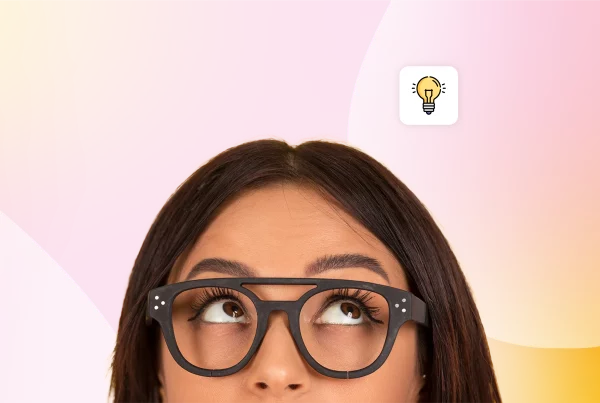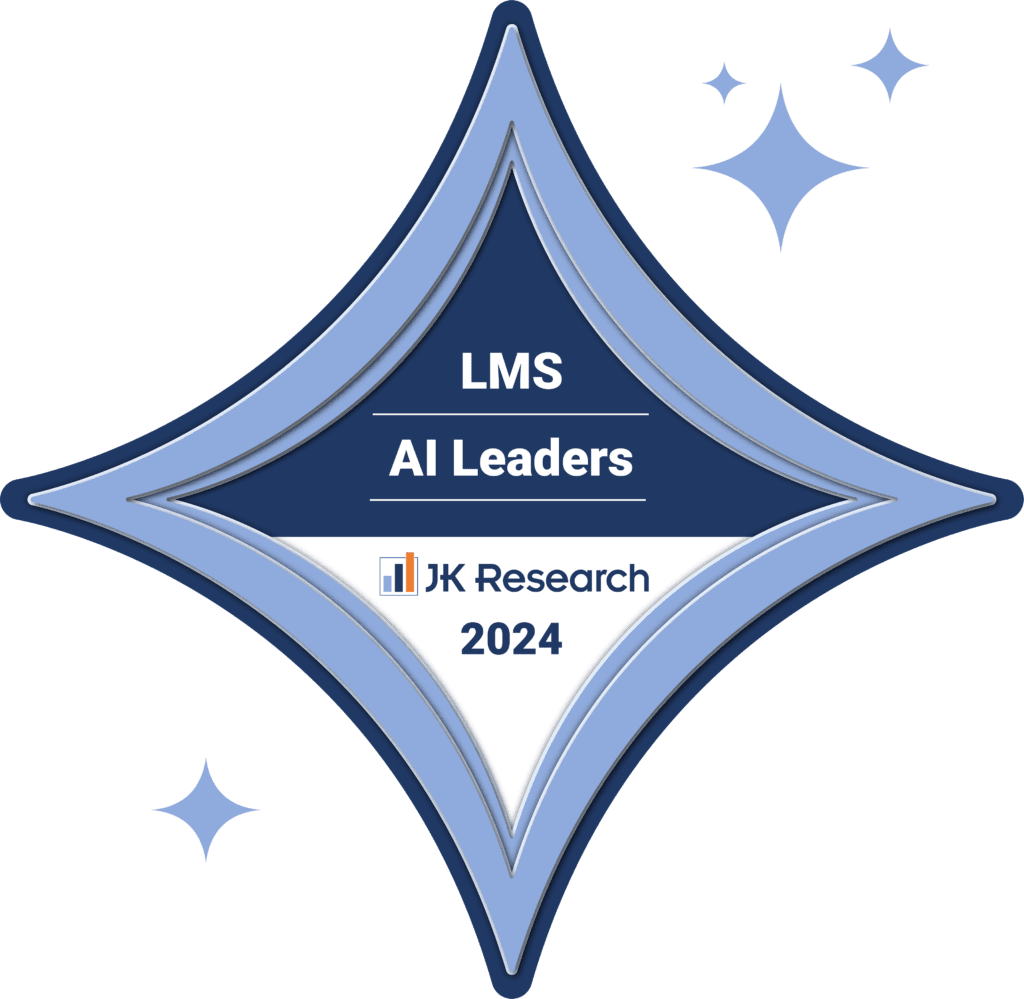Is your learning and development team ready to deliver in 2023?
Are you on top of the latest developments in learning and development that could give your department and your wider company a competitive edge?
If you can’t answer those questions with confidence, then keep reading and discover the seven trends that’ll shape learning and development in 2023…
1. Bitesize & microlearning
Gone are the days when it was acceptable (or advisable) to subject your colleagues to lengthy, ponderous training courses that would stretch over the course of hours – or even days!
If there’s one learning and development trend that’s already started to take off ahead of 2023 it’s this one.
Just as individuals have come to consume entertainment media in bitesize chunks (think Netflix, YouTube Shorts and social media platforms like TikTok), they’re expecting their professional development to be delivered in bitesize formats too.
And, when we say bitesize, we really do mean it!
According to one prominent e-learning analyst, videos that are a mere 90 to 120 seconds in length are going to become the norm. ⏱️⏱️
This is a big challenge for learning and development teams to deliver, requiring a rethink of the type of Learning Management System (LMS) they use to deliver content to employees.
But, this challenge is certainly worth rising to. Why? Because, according to the Journal of Applied Psychology, bitesize learning increases learning transfer by a massive 17%!
In fact, increasingly L&D professionals are finding that the new generation of Learning Experience Platforms (LXPs) are far better suited to delivering this short-form, easily digestible content.
2. Personalised learning
If a training course feels generic, and contains information that is irrelevant to the person studying it, then it’s not exactly going to result in a rewarding learning experience.
That’s why one of the top learning and development trends of 2023 will be personalised learning.
Just as modern media platforms like Netflix (there’s that brand again!) offer up personalised viewing choices based on previous watching history, employees are increasingly expecting to receive personalised, tailored, learning experiences.
There will no longer be an excuse for generic training courses that are filled with extraneous material that’s irrelevant to the employee.
Personalised learning has many benefits, but three of the core benefits that are recognised by leading L&D teams include:
- Personalised learning content is relevant and targeted to employees, imparting L&D with more value within the broader organisation.
- Personalised learning breaks down barriers, helping employees to work in individualised ways towards a common goal.
- Personalised learning empowers employees, giving them true ownership over their own professional development and training.
Instead, learning and development teams are going to have to embrace Learning Platforms that allow them to create tailored content for individual employees.
Don’t just take our word for it, though. According to a piece of research conducted at the Széchenyi István University, personalised learning can help learners remember 30% more data and score 20% higher on tests!
Here at Thirst, we take this personalised approach to employee learning a step further, using AI recommendations and machine learning to create intelligently curated learning experiences for individuals. It really has to be seen to be believed.
3. The confluence of AI and L&D
As we hinted at above, 2023 is set to be the year that AI and machine learning fully enters the realm of learning and development.
Until the advent of AI in L&D, personalisation was a very manual, judgement-led process which didn’t always result in effective outcomes.
With AI and machine learning, learning can truly become personalised on an automated basis, leaving learning and development professionals with more time to concentrate on other value-added tasks.
We’re not the only ones that believe this! As per a survey conducted by educational technology provider Prometheus, 86% percent of teachers believe that AI should be used to improve learning outcomes.
At Thirst, our Learning Platform allows you to set specific learning objectives for each individual within your organisation and then monitor them on their own personalised learning journey.
If your LMS or LXP isn’t using AI and machine learning, then make 2023 the year that you switch to one that does!
4. Leveraging in-house and external content
Traditionally, learning and development teams have faced a binary choice. Use either internally-produced learning content, or externally-produced learning content.
It’s been a case of either/or.
But, that’s no longer acceptable!
Just as consumers have more choice than ever when it comes to their media content, the same goes for learning content.
Employees aren’t satisfied with generic externally-produced content, or internal content with low-production values.
They want to imbibe the very best content – whether it’s been produced internally or externally.
The production of high-quality, relevant content is more important than ever. Given that millennials are set to make up 75% of the global workforce by 2025, and have an average attention span of only 12% seconds (according to Online Optimism), traditional learning materials with low-production values are unlikely to cut it! ⏩⏩
To meet this challenge, learning and development teams need to be able to utilise Learning Experience Platforms that are ‘content agnostic’ and able to host content from multiple sources.
That’s exactly the experience that the Thirst platform offers – allow learning and development teams to collate all internal and external learning content into a single, easily-accessible location.
5. Data-based decision-making
How do you know if a particular employee requires further training and development? If you’re unable to answer questions like that with hard data in 2023, then you’ll be hard-pressed to justify further investment in your learning and development team.
More and more learning and development teams are moving to a model centred on the systematic collection and assessment of learning data.
If you want to jump on board this trend – and why wouldn’t you?! – then you’ll need to adopt a Learning Experience Platform that provides you with data-rich insights into the learning journeys of your employees.
Being able to gather – and act upon – data-rich insights is especially important given that 72% of L&D professionals agree that learning and development has become a strategically important part of their business. In other words, if you’re going to be helping to shape business strategy, you’re going to need data…
Thirst is exactly the kind of Learning Platform that allows L&D pros to capture and analyse data – allowing you to track the progression and growth of employees, including the segmentation of data to make it more manageable and useful.
For example, with Thirst you’ll be able to garner incredibly rich insights such as which age group within your organisation is most likely to consume learning materials for their own development.
These powerful insights (and many many more!) will enable you to make intelligent, effective changes to your learning and development strategy, delivering tangible results for your organisation in 2023 and beyond.
6. Social learning that drives collaboration
Learning thrives in collaborative environments. That’s why ‘social learning’ is set to be one of the major learning and development trends of 2023.
If an employee finds a particular piece of learning content useful, and interesting, (even inspiring!), then they should be able to easily share it with their colleagues.
Providing employees with the ability to share learning content with their colleagues not only encourages spontaneous learning, but it also adds a stamp of approval to your content.
This ‘social proof’ can provide validation to other employees that a piece of learning content is worth consuming. This is far more powerful than many learning and development professionals realise (it’s why eCommerce websites go to such strenuous efforts to gain customer reviews and recommendations).
And, it really does work! A study conducted at Harvard Business School found that social learning can increase course completion rates by up to 85%. After all, employees don’t want FOMO if they know all their colleagues have completed a course, and they haven’t!
With that in mind, learning and development teams should be thinking beyond the individual level (although, that is important!), and seek to create communities of learners who can share knowledge, content and insights.
Guess what?! Thirst allows L&D teams to do exactly that!
The Thirst platform allows learners to follow other employees within the business, share content, see what content others have shared, and even leave comments and engage in chats.
Thirst is a social-first Learning Platform that truly encourages and empowers peer-based learning.
7. Skills-based learning that accelerates career growth
If there’s one trend that will not only shape – but, reshape – learning and development in 2023 it’s skills-based learning.
Employees are no longer satisfied with mandatory training and formal qualifications. They want to learn tangible skills that’ll directly improve their performance on the job and improve their future career prospects.
They want skills!
According to a survey conducted by Mind Tools, 57% of employees learn for the purposes of personal development – rather than to simply accrue new qualifications.
As the American psychologist Abraham Maslow identified many decades ago, personal development is the key to achieving self-actualisation – that is, the achievement of your true potential as a human being.
Skill-based learning delivers this.
So, learning and development professionals require a learning platform that is focused on skills-based learning over and above other learning objectives.
Platforms like Thirst deliver exactly that experience.
But, you may be asking, what’s in it for your organisation? Skills-based learning comes with a wealth of benefits of organisations that implement it properly.
Consider the following (from LinkedIn’s 2022 Workplace Learning Report):
Employees who feel their skills aren’t being put to good use are 10 times more likely to be looking for a new job – resulting in your business having to go to the expense of recruitment.
79% of learning and development professionals state that it’s easier to reskill a current employee than hire a new one.
Companies that are good at internal mobility (that is, upskilling and internally promoting employees), are able to retain staff for two times longer than companies that are poor at internal mobility.
As you can see, skills-based learning is a win-win situation for employees, L&D professionals and businesses!
Meet Thirst: the learning platform of the future
Are you ready to embrace the seven trends that are set to shape learning and development in 2023? Because, Thirst can help you do so.
We truly are striving to create the Learning Platform of the future. If you want to be part of the new learning and development movement, then speak to us today.
Find out more about the features of Thirst now
For more e-learning news, advice and information, read the Thirst blog…
What Is the Difference Between Knowledge and Skills? | Does Poor L&D = Poor Productivity? | Skills-Based Organisations: The What, When and How of SBOs







